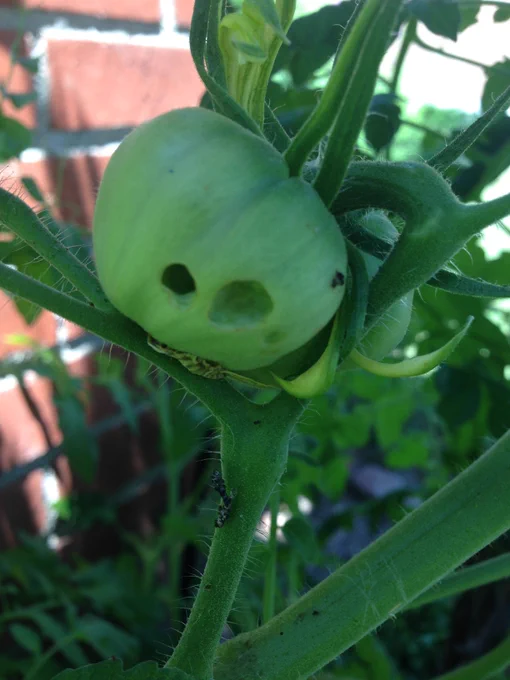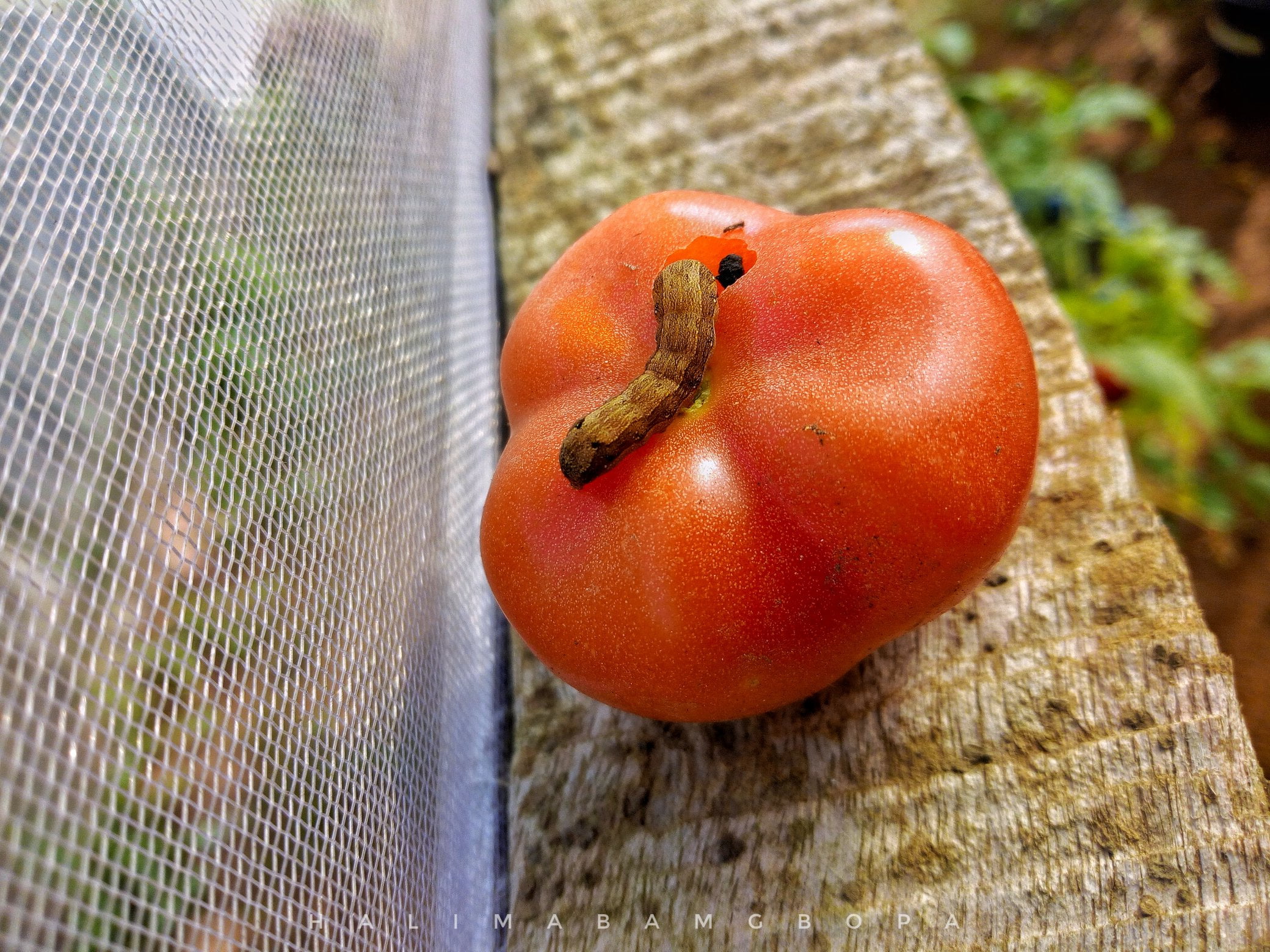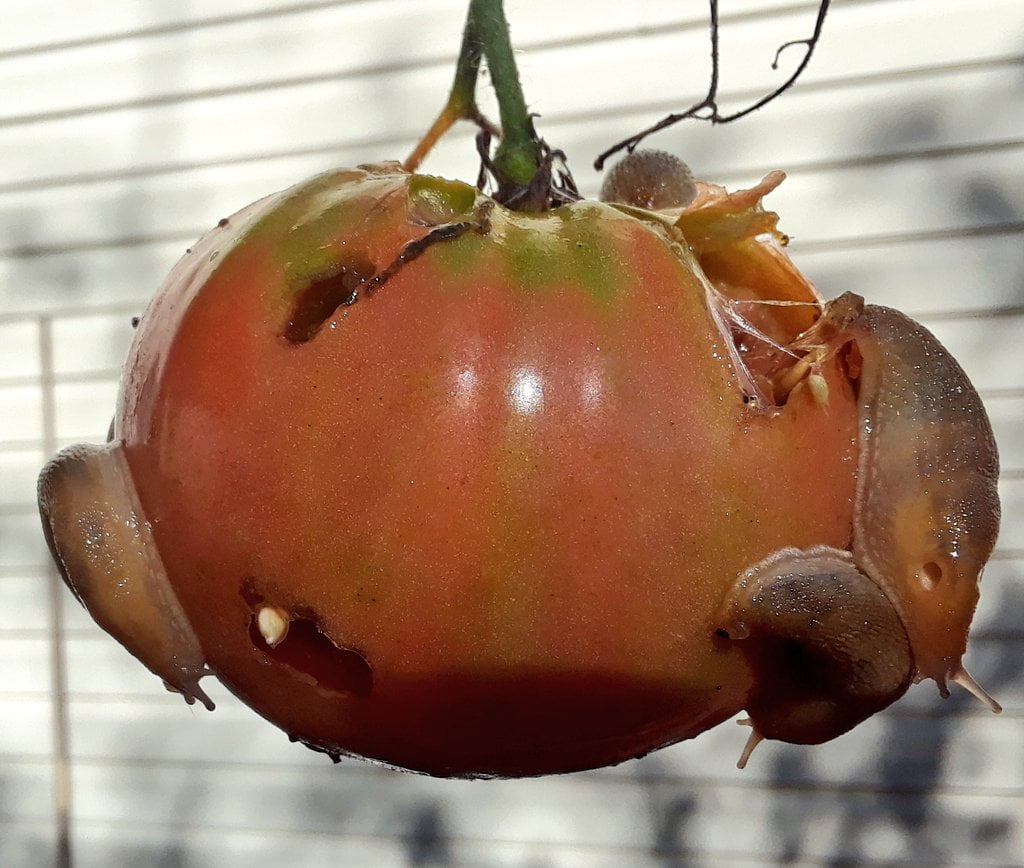
When it comes to gardening, few things are as frustrating as discovering mysterious holes in your prized tomato plants. You’ve lovingly nurtured them from tiny seedlings to robust plants, only to find these perplexing perforations threatening your harvest. But fear not, fellow gardeners, because in this article, we’re going to unravel the intriguing phenomenon of “holes in tomatoes.” We’ll delve into the root causes, debunk some myths, and arm you with practical remedies to protect your precious tomato crop.
Table of Contents
Types of Holes In Tomatoes and Their Culprits

When we talk about “holes in tomatoes,” we’re not referring to a slice of Swiss cheese strategically placed on your salad. These are real-life, pesky perforations that can wreak havoc on your tomato plants. But before we dive headfirst into the mystery, let’s categorize these holes and their potential culprits:
- The Pinprick Puzzler: Tiny Holes
- Are they really holes, or just superficial markings?
- Suspected culprits: Flea beetles, spider mites, or aphids?
- The Crater Conundrum: Larger Holes
- Can they be called craters, or are they irregular gouges?
- Potential culprits: Tomato hornworms, cutworms, or rodents?
- The Swiss Cheese Scenario: Multiple Holes
- Are these holes connected, forming a pattern?
- Suspected culprits: Slugs, snails, or birds?
Debunking Holes In Tomatoes Myths
Before we dig deeper into the causes of these holes, let’s tackle some tomato myths that have circulated among gardeners for generations:
- Myth: Holes mean your tomatoes are infected with a disease.
- Truth: While diseases can affect tomatoes, not all holes are disease-related.
- Myth: Poking holes in the soil around your tomatoes will prevent more holes.
- Truth: This is an old wives’ tale with no scientific basis.
- Myth: Playing loud music in your garden will scare away hole-causing creatures.
- Truth: Your neighbors might not appreciate the noise, and it won’t deter pests.
Unmasking the Culprits Behind Holes In Tomatoes
Now that we’ve cleared the air on tomato myths, let’s get down to the nitty-gritty and uncover the true culprits behind those holes in tomatoes:
Tiny Terrors: Flea Beetles, Spider Mites, and Aphids
- These minuscule menaces are often responsible for the pinprick holes in your tomatoes.
- Flea beetles are known for their jumping prowess and voracious appetite for tomato leaves.
- Spider mites are stealthy web-spinners that suck the life out of your plants.
- Aphids are sap-sucking insects that can quickly infest your tomato garden.
Voracious Vandals: Tomato Hornworms, Cutworms, and Rodents

- Tomato hornworms are like the Godzilla of the tomato world, devouring entire leaves.
- Cutworms are nocturnal nibblers that chew through young tomato stems.
- Rodents like mice and squirrels may take a liking to your ripe tomatoes.
Slimy Saboteurs: Slugs, Snails, and Birds

- Slugs and snails leave their slimy trails as evidence of their late-night feasts on your tomatoes.
- Birds, especially crows and sparrows, can peck away at your ripening fruits.
Identifying the Culprits
To combat the hole-makers effectively, you need to become a detective in your garden. Here are some tips to help you identify the specific culprits:
Nighttime Stakeout
Some pests, like cutworms, are nocturnal. Head out to your garden with a flashlight after dark to catch them in the act.
Inspect the Leaves
Examine the leaves closely for signs of tiny pests, webs, or sticky residue, which are indicative of spider mites or aphids.
Follow the Slime Trail
Slugs and snails leave a shiny trail behind them. Look for this telltale sign on your tomato plants and nearby soil.
Keep an Eye on the Skies
If you suspect birds are the culprits, consider using scare tactics like reflective tape or garden decoys.
Remedies and Prevention of Holes In Tomatoes
Now that we’ve identified the villains behind the holes in tomatoes, it’s time to take action and protect your precious crop. Here are some effective remedies and prevention strategies:
Handpick Pests
- For larger pests like tomato hornworms, cutworms, and rodents, handpicking is a viable option.
- Wear gloves and inspect your plants regularly, removing any offenders you find.
Neem Oil Spray
- Neem oil is a natural pesticide that can deter many common tomato pests.
- Mix it with water and spray it on your tomato plants, focusing on the undersides of the leaves.
Beneficial Insects
- Encourage beneficial insects like ladybugs and parasitic wasps to your garden.
- They can help control pest populations naturally.
Row Covers
- Use row covers to protect your tomato plants from flying pests like birds and insects.
- Ensure the covers are securely fastened to prevent any intruders from sneaking in.
Companion Planting
- Planting companion herbs and flowers like basil, marigolds, and nasturtiums can repel some tomato pests.
- Consider interplanting these alongside your tomatoes.
Organic Mulch
- Apply organic mulch around your tomato plants to discourage pests like cutworms from reaching the stems.
- Mulch also helps retain moisture and control weeds.
Water Management
- Proper watering is crucial for healthy tomatoes. Water at the base of the plants to avoid wetting the leaves, which can attract pests.
- Use a drip irrigation system for precision watering.
Conclusion – The Tomato Triumph
In the battle against holes in tomatoes, knowledge is your best weapon. By understanding the types of holes, their culprits, and effective remedies, you can triumph over these pesky garden invaders. Remember, not all holes are cause for alarm, and with a little vigilance and some strategic gardening, you can enjoy a bountiful tomato harvest. So, roll up your sleeves, get out there, and let’s put an end to those holes in tomatoes once and for all!
Frequently Asked Questions
Q1: Can I still eat tomatoes with holes?
- A1: Yes, you can. Simply cut away the affected portions, and the rest of the tomato is usually perfectly fine to eat.
Q2: Are holes in tomatoes a sign of disease?
- A2: Not necessarily. While some holes can be caused by diseases, many are the result of pest activity.
Q3: Do homemade remedies like garlic spray work against pests?
- A3: Garlic and other homemade sprays may have some deterrent effect, but they are often less effective than commercial solutions.
Q4: Can I use chemical pesticides to deal with tomato pests?
- A4: While chemical pesticides can be effective, they may harm beneficial insects and the environment. Consider organic alternatives first.
Q5: How often should I inspect my tomato plants for holes?
- A5: Regular inspection, at least once a week, is essential to catch pests early and take action promptly.
